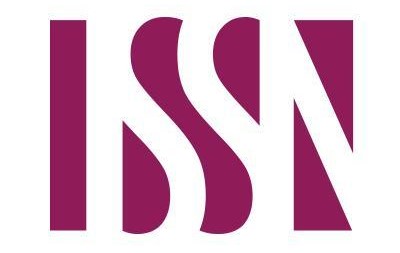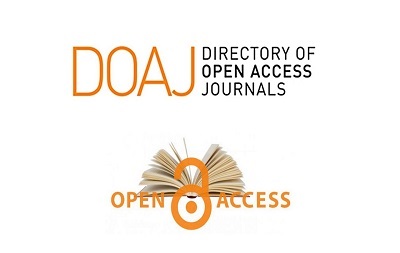Design tests to measure equilibrium according to the requirements of Motor performance on the balance beam in artistic gymnastics
Main Article Content
Abstract
The research aims to design tests to measure the ability to balance according to the requirements of kinetic performance on the balance beam. The descriptive approach was used using the survey method and correlational relationships because it is more appropriate to the nature of the research problem. The research community was determined using the comprehensive inventory method of third-year female students in the College of Physical Education and Sports Sciences at the University of Diyala, numbering (52) students, who represent the research community for the academic year (2023-2024). The study concluded that the balance ability tests for artistic gymnastics for female students of the College of Physical Education and Sports Sciences are distinguished by their ease of application and material cost, and do not require many devices or tools. They measure the purposes for which they were designed and enable those in charge of teaching the gymnastics subject to evaluate female students. The study recommended that it is necessary to rely on the balance ability tests for artistic gymnastics for female students of the Colleges of Physical Education and Sports Sciences when evaluating female students, and to conduct similar studies on larger samples or in gymnastics devices.
Article Details

This work is licensed under a Creative Commons Attribution-NonCommercial 4.0 International License.
References
Abdel Razzaq, N. K., Younis, M. H., & Dawood, M. K. (2013). Motor balance and its relationship to some physical and skill variables of indoor soccer players. Al-Anbar University Journal of Economic & Administration Sciences, 2(8).
Ahmed, M. (2013). The effect of a proposed training program for some motor qualities (balance - coordination - agility) on improving the accuracy of shooting with the feet of football juniors 9-12 years old [Master’s thesis in sports training]. University of Arab Ben M’hidi.
Aldewan, L. H., & Al-Temimy, S. L. A. (2013). Formative assessment to the method of teaching methods according to the model of Rosenberg. . . Journal of Studies and Researches of Sport Education, 36, 95–108. .https://www.iasj.net/iasj/article/94544
ayad Mohammad, N. (2010). The impact of using special exercises to develop static and dynamic balance and the level of skill performance on the balance beam. Al-Rafidain Journal For Sport Sciences, 16(54).
El-Shazly, M. S. E.-D. Z. U. (1995). Evaluation of Track and Field Competitions in the Arab Republic of Egypt. Physical Education Magazine, 35, 104.
Farhat, L. E.-S. (2001). Measurement and testing in physical education. Cairo: Book Center for Publishing.
Hamad, S. H., Saad, H. M., Agam, B. I., & Farhan, M. K. (2024). THE EFFECT OF VISUAL TRACKING EXERCISES ON SOME MOVEMENT ABILITIES AND THE SKILL OF DEFENDING THE COURT IN VOLLEYBALL FOR STUDENTS. Proximus Journal of Sports Science and Physical Education, 1(7), 77–83.
Kama, l A. H., & Mohamed, S. H. (1997). Physical Fitness and its Components. Theoretical Foundations and Physical Preparation - Measurement Methods (1st ed, p. 267). Dar Al Fikr Al Arabi.
Mashkoor, N. H., & Othman, I. A. (2023). Design and standardization of the self-talk scale for students applied in the fourth stage of the College of Physical Education and Sports Sciences, University of Basra. Sciences Journal Of Physical Education, 16(6).
mtanius, N. M. (2016). Building and Standardizing Psychological and Educational Tests and Measures (p. 111). Dar Al-Asar Al-Ilmi for Publishing and Distribution.
Musharraf, A. J., & Al-Hadithi, K. I. S. (2022). The effect of exercises using the method of learning for mastery and performance simulation tools in developing the skills of standing on the hands and the human wheel for the floor movements carpet in the artistic gymnastics for men. Sciences Journal Of Physical Education, 15(5), 460–477. https://www.iasj.net/iasj/article/273682
Mushref, A. J. (2024). The effect of exercises similar to performance according to a multi-level method in learning some of the skills of the floor mat in artistic gymnastics for men. University of Anbar Sport and Physical Education Science Journal, 14(28). 10.37655/uaspesj.2024.148118.1118
Nabil, J. S. A.-N. (2010). Statistics in Education and Human Sciences with its Software Application (p. 183). Dar Al-Hamed for Publishing and Distribution.
Othman, I. A., Mohamed, L. H., & Shabib, S. S. (2023). The effect of Top Play and Top Sport cards using recreational games in developing children’s creative abilities. Journal of Studies and Researches of Sport Education, 33(2). https://doi.org/10.55998/jsrse.v33i2.466
Othman, I. A., Mohammed, L. H., Alsaeed, R., & Shabib, S. S. (2024). The effect of the Montessori program using physical activity games in enhancing the sensory-motor perception abilities of kindergarten children aged 5 to 6 years. Journal of Sports Education Studies and Research, 34(3), 19–36. DOI: https://doi.org/10.55998/jsrse.v34i3.617
Saad, L. H. A.-D. D. (2017). The impact of the use of an educational curriculum in a cooperative (integrated and technical) method in teaching some ground movements for the third stage. Journal of Studies and Researches of Sport Education, 53.
Sabaa, M. A. L. (2008). Principles of Psychological Measurement and Educational Evaluation (p. 307). Dar Al Fikr Publishers and Distributors.
Shadi, A. A. F. (2015). The effect of balance training (static-dynamic) on some physical variables and the level of complex skill performance of young football players. Scientific Journal of Physical Education and Sports Sciences. Al-Mansour, 25(1), 19–41. https://doi.org/DOI:10.21608/ejsk.2015.95644
Sheikha, Y. A.-H. (1991). Building Standards for Some Health-Related Physical Fitness Tests for Bahraini Female Physical Education Teachers. Journal of Physical Education Research, United Arab Emirates University, 45.





 IASJ
IASJ CC-BY-4.0
CC-BY-4.0 turnitin
turnitin ISSN
ISSN DOAJ
DOAJ Crossref
Crossref GoogleScholar
GoogleScholar Orcid
Orcid